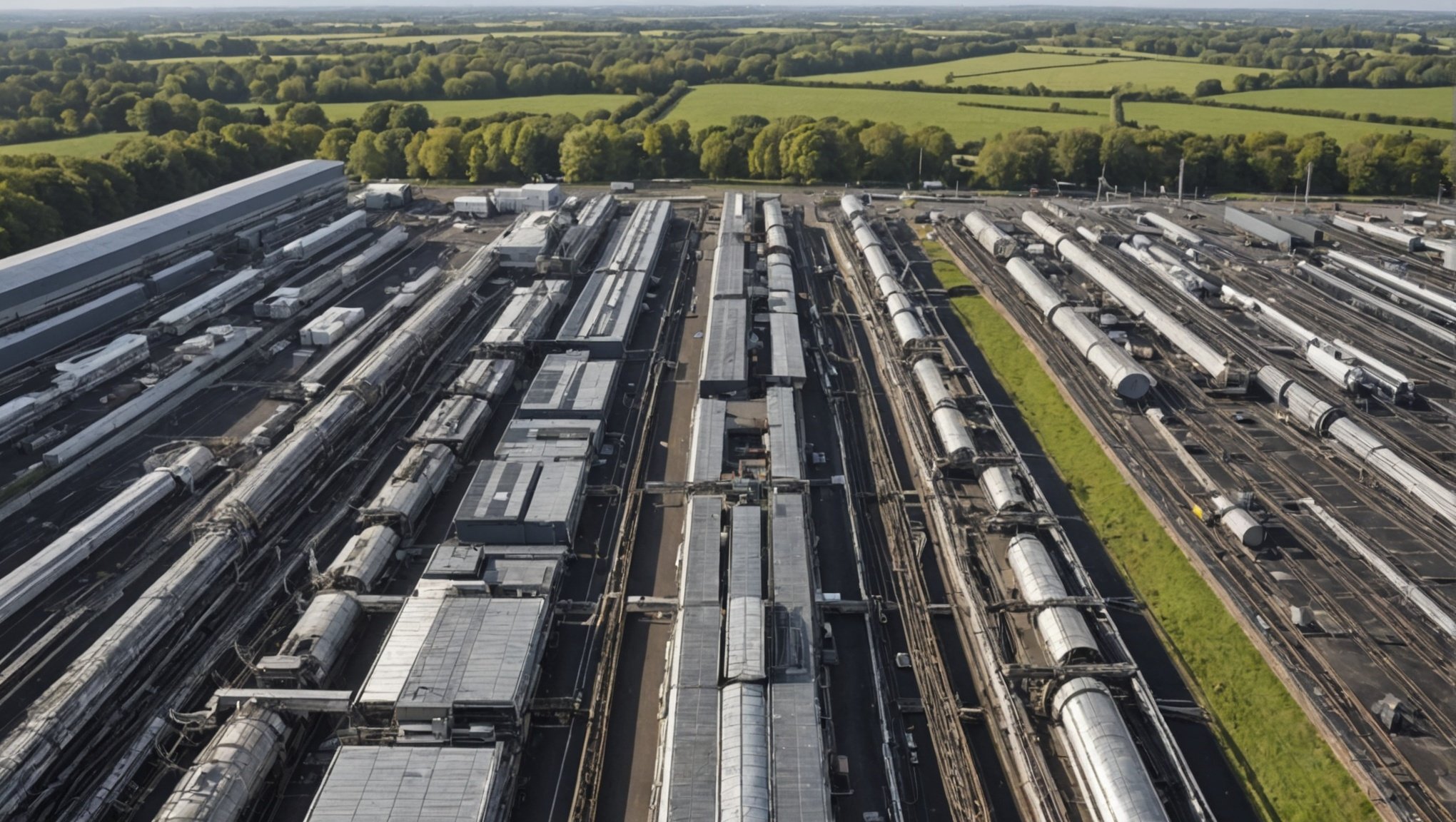Understanding Carbon Neutrality for SMEs
Achieving carbon neutrality is vital for UK SMEs aiming to meet their sustainability goals. This involves balancing emitted carbon with an equivalent amount removed from the atmosphere, effectively reducing a company’s carbon footprint to zero. It’s a key aspect of sustainable business practices and plays a significant role in addressing climate change.
The focus on carbon neutrality influences the sustainability of small and medium-sized enterprises in the UK. High carbon emissions can lead to increased operational costs and harm a company’s reputation, affecting its long-term viability. By committing to resource-efficient practices, SMEs can not only reduce emissions but also enhance their market competitiveness.
Also to read : Building a Strong Cybersecurity Framework: Essential Strategies for UK E-Commerce Platforms
Regulatory frameworks in the UK strongly support the move towards carbon neutrality, encouraging SMEs to adopt eco-friendly initiatives. These policies provide guidelines and incentives for businesses to optimize their operations, reduce carbon output, and meet national and global sustainability objectives. For many SMEs, understanding and integrating these frameworks into their practices is essential for achieving their sustainability and business growth goals.
Embracing carbon neutrality not only aids in environmental conservation but also positions SMEs as forward-thinking entities committed to future-proofing their operations.
In the same genre : Mastering Last-Mile Delivery: Strategies to Enhance E-commerce Efficiency in the UK
Assessing Your Current Carbon Footprint
Measuring your carbon footprint is a fundamental step in understanding your environmental impact. Whether you are a business or an individual, the first step in a carbon footprint assessment involves identifying sources of emissions. These can include energy use, waste production, and transportation.
Once you’ve pinpointed these areas, employ tools like online calculators or software designed for accurate measurement. These resources provide estimates of your carbon emissions based on inputs you provide. For businesses, specialised commercial tools take into account complex factors and offer more tailored results.
Next, apply sustainability benchmarking by comparing your emissions with industry standards or past performance. This helps you gauge where you stand environmentally and highlights areas needing improvement. Companies in similar industries can serve as reference points, providing insights on common practices and setting achievable targets.
It’s important to engage in regular assessment to track progress over time. This consistency not only supports ongoing sustainability efforts but also aligns with emerging environmental regulations. By adopting these practices, you pave the way for a more sustainable future, making informed decisions on energy use and emissions reduction.
Developing a Carbon Reduction Strategy
Creating a comprehensive carbon reduction strategy is essential for organisations aiming to enhance their sustainability initiatives. The cornerstone of this strategy involves thorough action plan development to ensure effective results.
Setting Clear Sustainability Goals
Setting ambitious yet realistic sustainability goals forms the foundation of any successful carbon reduction strategy. Organisations should establish clear objectives by identifying key performance indicators (KPIs) that reflect their commitment to reducing emissions. Clear goals serve as a guide for action plan development, ensuring that each step taken aligns with the broader mission.
Identifying Key Areas for Improvement
To craft the most efficient carbon reduction strategies, it is crucial to identify specific areas for improvement within current operational practices. This involves conducting a detailed analysis of energy consumption, waste management, and resource utilisation. Understanding where improvements can be made is pivotal for optimising sustainability initiatives and developing an action plan that yields tangible results.
Engaging Stakeholders in the Process
Incorporating input from all stakeholders is vital in the sustainability planning process. Engaging employees and management not only fosters a culture of environmental responsibility but also ensures that diverse perspectives contribute to innovative solutions. By involving stakeholders in the development of carbon reduction strategies, organisations can create a collective commitment to achieving sustainability goals effectively.
Implementing Energy Efficiency Measures
Implementing energy efficiency measures can revolutionize Small and Medium Enterprises (SMEs) by offering significant cost savings and promoting sustainable practices. By adopting modern energy-saving technologies, SMEs are poised to achieve substantial reductions in energy consumption.
Energy-saving Technologies
Innovative technologies like LED lighting, smart thermostats, and energy-efficient appliances reduce usage without sacrificing performance. Utilising smart grid systems can optimise energy distribution, thereby enhancing efficiency further. These technologies represent a way forward for SMEs aiming to cut overhead costs while maintaining sustainable practices.
Financial Implications
Investing in energy-saving measures involves upfront costs, yet the cost savings realised over time make them attractive. Return on investment (ROI) can often be achieved within a few years as savings accumulate. Calculating ROI requires an analysis of energy consumption patterns, potential savings, and initial investment.
Case Studies
Numerous case studies exhibit successful energy efficiency implementations. For instance, a small retail business cut its energy bill by 30% using LED lighting and energy management systems. Another example includes a manufacturing firm achieving similar savings by upgrading machinery to more energy-efficient models. Such cases illustrate both the feasibility and the tangible benefits of implementing these measures.
Exploring Renewable Energy Options
Exploring renewable energy options requires understanding various sources such as solar power and wind energy solutions. These alternatives offer potential for reducing carbon footprints while promoting sustainability. Let’s dive into assessing the viability of such solutions and the associated financial incentives.
Assessing Viability for Renewable Energy Sources
The viability of renewable energy can be evaluated based on business location and existing infrastructure. Solar power is ideal in regions with abundant sunlight, whereas wind energy solutions are more feasible in areas with ample wind flow. Evaluating local weather patterns and geographical considerations is crucial for optimizing energy production.
Financial Incentives and Support Schemes
Numerous government incentives exist to encourage the transition to renewable energies. Examples include tax credits, grants, and rebates aimed at reducing the financial burden of installing green technologies. These incentives not only promote environmental benefits but also offer substantial savings over time, highlighting the practicality of adopting renewable energy.
Collaborating with Renewable Energy Providers
Partnering with renewable energy providers can streamline the transition to cleaner energy sources. These partnerships provide businesses with expert insights, tailored solutions, and access to the latest technologies. Evaluating providers based on expertise, reputation, and the ability to deliver feasible solutions will ensure successful integration of renewable energies.
Utilizing Carbon Offsetting Programs
In today’s climate-conscious world, carbon offsetting has emerged as a significant tool for sustainability, especially for small and medium enterprises (SMEs). Carbon offsetting involves mitigating the impact of one’s carbon emissions by funding equivalent carbon dioxide saving projects. Despite being a monetary investment, the purchase of carbon credits offers businesses a tangible way to express their commitment to reducing their carbon footprint.
Choosing credible offsetting programs can be daunting. However, it is essential to ensure programs are verified by recognized bodies like the Gold Standard or Verra. These certifications verify that projects efficiently sequester carbon or reduce emissions, ensuring the authenticity of your investment.
Building sustainability partnerships can amplify your business’s eco-friendly ethos. Collaborating with local environmental organizations not only enhances community relations but can lead to more robust offset initiatives that align with your business’s values. When communities are involved, the environmental programs tend to be more impactful and sustainable in the long run. This collaboration strengthens regional ecosystems and provides businesses with opportunities to engage directly with stakeholders, enhancing their community impact and credibility in sustainability efforts.
Monitoring and Reporting Progress
Tracking sustainability efforts can seem daunting, but with the right approach, it becomes manageable and insightful. Implementing performance metrics allows organisations to gauge their progress accurately. By setting clear progress tracking milestones, companies can ensure they stay on course and make informed decisions.
Establishing Key Performance Indicators
Key Performance Indicators (KPIs) are fundamental in assessing sustainability efforts. By defining specific, measurable objectives, organisations can evaluate how well they meet their environmental goals. These KPIs should align with the core mission and intended long-term impacts, offering a clear roadmap for improvement and adaptation.
Regular Reporting and Transparency
Regular, transparent sustainability reporting is crucial for maintaining trust and accountability with stakeholders. By communicating progress openly, organisations can build credibility and demonstrate their commitment to environmental responsibility. This openness encourages stakeholder engagement and continuous improvement.
Utilizing Technology for Data Management
Leveraging technology enhances carbon management and monitoring efficiency. Advanced data platforms facilitate precise progress tracking, allowing for streamlined data collection and analysis. This not only optimises resource allocation but also supports timely, effective decision-making. Embracing these technological tools is essential for modern sustainability strategies.
Overcoming Common Challenges
Small and medium enterprises (SMEs) often face significant sustainability challenges on their journey to carbon neutrality. These challenges primarily revolve around limited resources, financial constraints, and a lack of expertise. Many SMEs struggle with the financial burden of sustainable practices, finding it difficult to allocate the necessary funds towards eco-friendly solutions. Additionally, the absence of clear guidelines can impede their progress.
To address these SME hurdles, practical solutions are essential. One effective approach is seeking partnerships with larger organizations or governmental bodies that can offer subsidies or incentives. These collaborations not only alleviate financial stress but also provide SMEs with valuable guidance in implementing sustainable measures.
Moreover, numerous resources and support systems are available to assist SMEs in their sustainability efforts. Training programs and workshops can help bridge the knowledge gap, offering insights into cost-effective and impactful practices. Many non-profit organizations also extend support through mentoring and consultancy services, tailoring their advice to the unique circumstances of each SME.
By leveraging these solutions and tapping into available resources, SMEs can effectively overcome sustainability challenges and make meaningful progress towards their carbon neutrality goals.
Case Studies of Successful UK SMEs
Exploring real-world success stories can be incredibly insightful, especially in the realm of sustainability for UK SMEs. Each case study provides a roadmap for others to follow.
Highlighting Leading Examples
Several UK SMEs stand out for their innovative approaches to achieving sustainability. For instance, a local café chain integrated a zero-waste policy, reducing its carbon footprint substantially. Meanwhile, a tech startup partnered with renewable energy providers to power its operations entirely through solar energy. These examples underscore that sustainability isn’t confined to certain sectors; it’s a feasible goal across various industries.
Lessons Learned from Their Journeys
From these journeys, we see that commitment to sustainability not only builds brand credibility but can also result in cost reductions. For SMEs, embracing such strategies has often led to enhanced employee morale and customer loyalty. Each enterprise, while unique in its execution, shares a focus on leveraging local resources and community partnerships.
Strategies for Replication by Other SMEs
For other UK SMEs aiming to replicate these successful strategies, key guidelines include:
- Conducting a thorough assessment of current operations
- Implementing measurable sustainability goals
- Engaging stakeholders through transparent communication
Adapting these strategies to fit individual business contexts can lead to achieving desired sustainability outcomes.


















